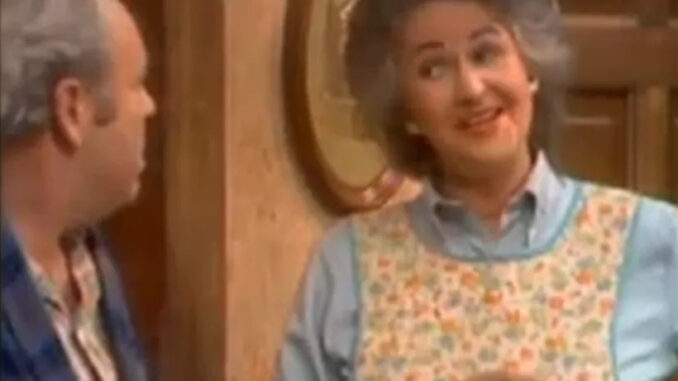
When Archie and Mike fall ill, Edith’s outspoken cousin Maude Findlay steps in — shaking up the Bunker household with her strong personality and sharp wit.
Maude Findlay Joins All in the Family and Stirs Up the Bunker Household
In one of the most memorable episodes of All in the Family, viewers were introduced to Maude Findlay, Edith Bunker’s liberal and opinionated cousin. Played by the brilliant Bea Arthur, Maude arrives just in time to help Edith care for both Archie and Mike, who are bedridden with the flu.
Her entrance is anything but quiet.
A Culture Clash in the Living Room
Archie, known for his conservative views and stubborn nature, instantly clashes with Maude’s sharp tongue and progressive ideals. The verbal sparring between the two offers some of the episode’s funniest — and most biting — moments, as Maude refuses to back down from Archie’s outdated opinions.
While Edith tries to play peacemaker, it’s clear that Maude isn’t one to be silenced, and her presence forces the family to confront their differences head-on.
A Star is Born
What began as a guest appearance quickly turned into something bigger. Maude’s impact was so strong that she soon received her own spin-off series, aptly titled “Maude.” The character’s fierce independence, feminist perspective, and biting humor resonated with audiences in a way that few TV characters had before.
This episode of All in the Family marked a cultural turning point — introducing a female character who would soon become a symbol of strength and progressiveness on television.
Why It Still Matters
Maude’s arrival didn’t just provide comic relief — it reflected the real-life tensions of American households during the era. Her dynamic with Archie mirrored debates happening across the country, making the episode as meaningful as it was entertaining.
Even decades later, her first appearance remains a standout example of how bold characters can shake up the status quo — and create TV history in the process.
